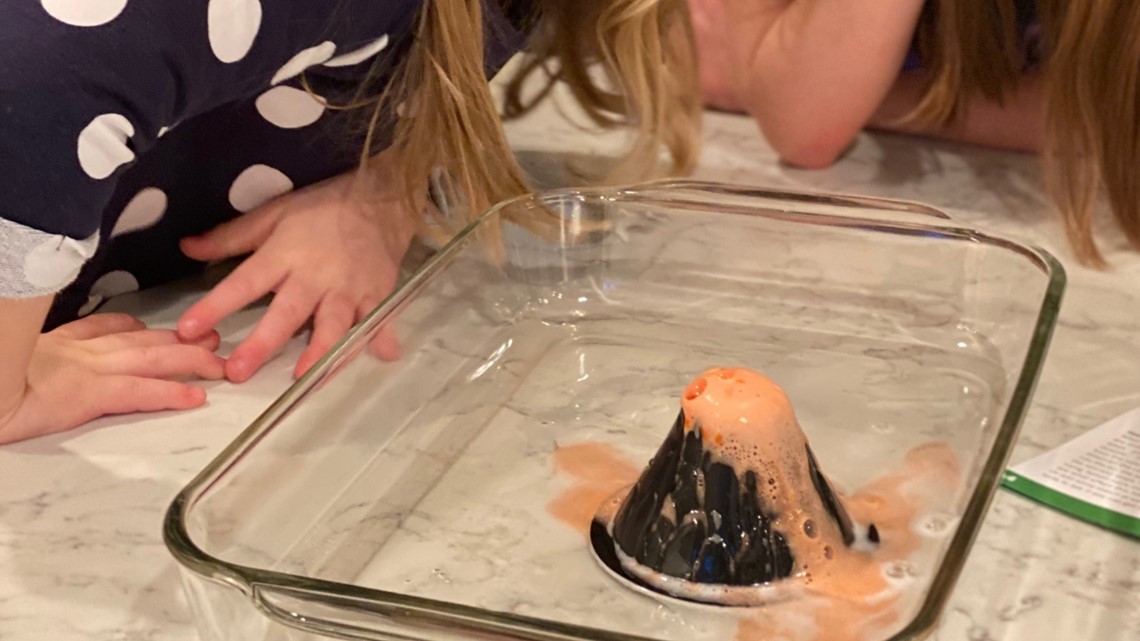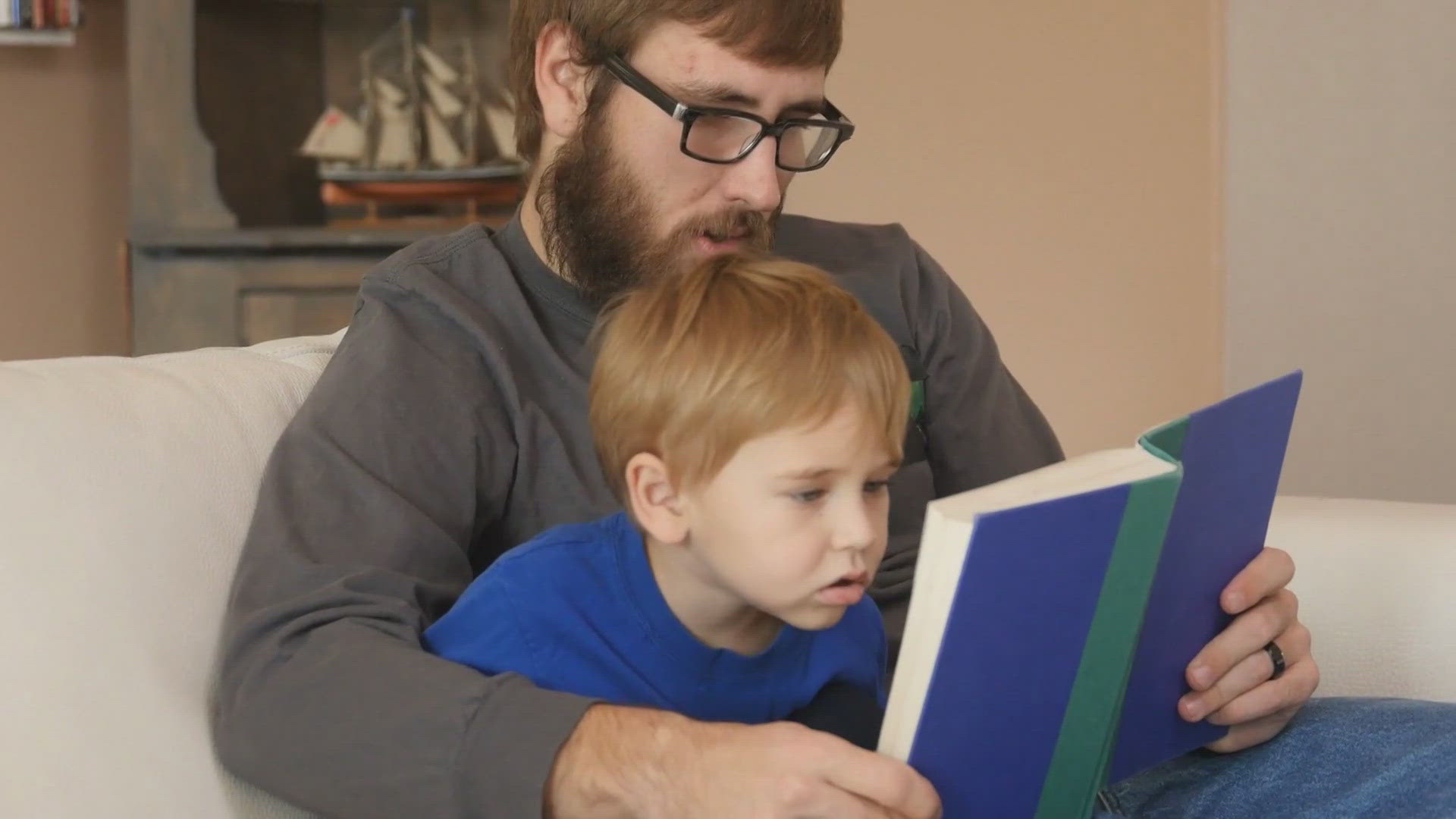CLEVELAND — I'm sure science projects and lab experiments are more complex now than I when I was little. But there's something fun and comforting in going back to the basics.
When we were looking around for craft projects and science kits, I came across a mini kitchen volcano!
This uses ingredients you already have in your kitchen: Baking soda, vinegar, food coloring and the option of dish soap.
My girls have been BEGGING to try the volcano. So, we gathered all the materials, but the mini volcano in a glass dish (easy clean up) and we started our lesson in exchanging atoms.
First, put about 2 teaspoons of baking soda in whatever container you're using. This is where maybe a shot glass or small cup would work, too.
If you want a bubbly, slow-moving volcano, add a couple drops of dish soap. If you want a molten lava looking explosion, add a couple drops of red food coloring.
Slowly add a teaspoon (we needed a little more) of vinegar into the top ... and watch the volcano erupt!!


To be honest, my girls were underwhelmed with the slow, bubbly effect. So, we tried it again without the soap and the mixture reacted faster with more of the food coloring involved.
So ... why does baking soda react like this to vinegar? Tell your kids, the two are exchanging atoms -- protons to be exact.
"Baking soda acts as a base, and takes a proton from vinegar, which is an acid. The reaction releases gas because when the baking soda receives the proton, it transforms into water and carbon dioxide," according to University of California Santa Barbara. (I'm not the authority on science, so take it from them)
Better than the reaction between the baking soda and vinegar? The reaction on the girls faces. They LOVED it.



